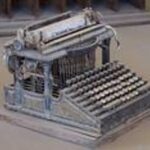Maybe you like to garden but don’t have time to visit multiple garden centers to find the right plant. Or maybe you’re looking for something nobody else in the neighborhood has. If so, buying plants on the internet may be for you.
Here are six tips to help find the right plant to buy and help it thrive in your yard.
One: Selection is the biggest plus of mail order.
You can buy almost any plant you can imagine online. Most mail-order nurseries carry many more varieties than the corner garden center, which can only stock favorites and best-sellers. Besides convenience (What’s easier than shopping in your pj’s and getting plants sent to your door?) the most important advantage to buying plants online is this virtually unlimited selection.
If you are a hosta or daylily collector, want a specific variety of apple, covet the latest heirloom vegetables, or want to turn your front yard into a prairie, online nurseries are often the only easy way to acquire what you want. Most gardeners who collect plants by new specimen plants through internet nurseries. Garden centers pick up on the hottest gardening trends when the go more mainstream, but gardening trendsetters often buy plants online.
Two: Know your zone
The USDA has divided North America into “hardiness” zones, based on the coldest winter temperatures where you live. When ordering plants online, pay attention to the hardiness zone listed in the plant’s description. If it does not match your zone number, the plant will not thrive or survive the winter in your area. Similar zones are available for some other parts of the world, such as in Europe.
For example, in Chicago (zone 5), I can only expect plants listed for zone 5 to thrive in my backyard. I can’t grow camellias, because they won’t survive the winters here. Southern gardeners may have the opposite problem; winters do not provide the cold weather that some plants, such as daffodils, need to thrive or bloom.
Because internet nurseries are based all over the country and ship all over the US, it’s important to pay attention to agricultural zones when ordering. Some gardening experts even suggest ordering principally from nurseries that grow their plants as near to where you live as possible. In practice, this may not always be easy to do, and the internet nurseries don’t always sell plants grown near where they are based.
Three: Mail-order plants are small
When you order plants, the company has to mail them to you. This means you’ll usually get younger, smaller plants than you’d find at the local garden center. Trees, shrubs, and many perennials are sold as “bare root,” in a dormant state that saves the costs of shipping containers and soil. Because trees and shrubs are smaller, they are often far less expensive than the same variety at the garden center. Know that small plants become established in your garden more quickly, and that small young trees will often catch up to the large ones sold by local nurseries within a year or two.
Two years ago, I ordered a small redbud tree from an internet nursery. When I planted the redbud, it was a stick two or three feet tall with some attached bare roots. At the end of it’s second summer, it’s taller than I am (about 10 feet) and looks like a respectably-sized young tree. Had a purchased 10-foot tree locally through a good garden center or landscaper, it would have cost $200 or more, and might have required professional installation. Buying the bare-root redbud from an online nursery cost me about $35-$40 with shipping, and I could dig my own planting hole.
Four: shop around for the best price, but price shouldn’t be the only consideration
Often, the price a plant is sold for online varies a great deal from grower to grower. One company may sell an Echinacea cultivar at three plants for $10-$15. At an upscale mail-order nursery, such as White Flower Farm, the plant may cost several times as much.
However, many things can affect the cost of the plant. The fancy nursery plants may larger, or they may be sold in pots with soil instead of bare root. Bigger is sometimes better, but not always. Often, fast-growing perennial varieties may catch up within a single season. And smaller plants may become established more quickly.
Occasionally, low price correlates with poor customer service. To see what others think of a nursery, check reviews at Dave’s Garden.
Five: Order early, but don’t expect instant gratification
Most nurseries ship plants when they should be planted in your area, but popular varieties often sell out by mid-winter. Thus, it pays to order early. Most, but not all, companies change your credit card when they ship and not when you order.
Six: Get plants in the ground as soon as they come
Plants are stressed by shipping and may be dehydrated when you receive them. When you get the box, water containers well and sprinkle water on bare-root plants. Get them in the ground as soon as possible after you receive them, but be sure to read and follow the instructions sent with your plants.
If plants are going in a new garden, prep the area or bed before the anticipated shipping date. Then getting them in the ground will be easy.





